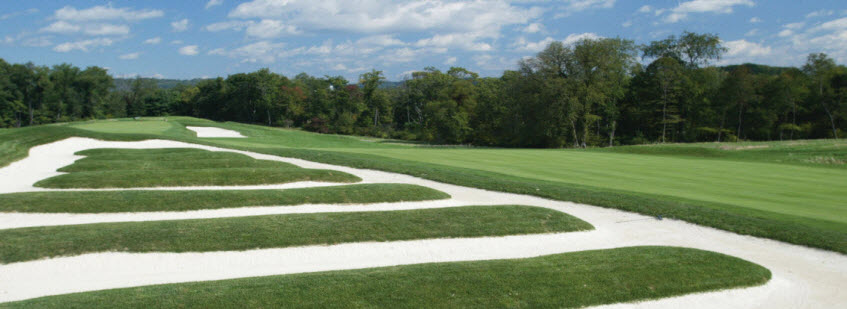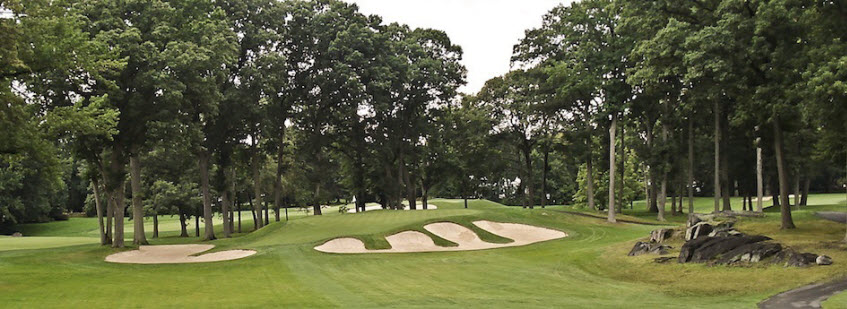Toughest U.S. Open Courses: Will Chambers Bay Rank?
It’s no secret that the U.S. Open loves hard golf courses. However, it’s not hard to make a difficult golf course – place the pins on knobs, grow the rough above the knee, bake the greens. That’s why the mantra recited in the offices of the United States Golf Association (USGA) is “tough, but fair.” They don’t want to hear comments like Johnny Miller describing putting the greens at Pinehurst in 2005 as “trying to hit a ball on top of a VW Beetle.”
Oakmont Country Club
This is why the USGA gravitates towards notoriously challenging tracks. Atop that list is Oakmont Country Club in western Pennsylvania, where the Open will return for the ninth time in 2016. The course has hosted 21 national championships. Lee Buck Trevino, who won a pair of Opens and finished 4th when he was 45 years old, said, “There’s only one course in the country where you could step out right now — right now — and play the U.S. Open, and that’s Oakmont.”
An amateur named Henry Clay Fownes who made his fortune in Pittsburgh steel, designed and built Oakmont. He sold his company to Andrew Carnegie when he was 40 years old and hired a crew of 150 men and 24 teams of mules to gouge out a golf course. When it was finished in 1904, there was no water in sight and scarcely any trees, despite its name. Fownes anticipated the advancement of golfing equipment (he was a steel man in an age of hickory shaft golf clubs, after all) and made Oakmont one of the longest courses of its time. Par was 80.
Oakmont had over 300 bunkers and greens to defend it, a number so intimidating that Mike Davis, who is responsible for setting up U.S. Open courses, has called the course “the scariest in golf.” Over the years, especially after Fownes died, the members planted so many trees that when the course eventually returned to its original vision at the end of the 20th Century, the removal of 8,000 trees was required. Even with all that hardwood gone, at the last U.S. Open at Oakmont in 2007, Angel Cabrera’s winning score was +5.
Winged Foot Golf Club
The only other winning score that high came this century at Winged Foot Golf Club’s West Course in Mamaroneck, New York. Winged Foot is another USGA favorite – it has hosted five Opens and is set for the 2020 Open. The course was the brainchild of the New York Athletic Club who hired architect A.W. Tillinghast with the mandate: “give us a man-sized course.”
Tillinghast is now famous for courses that have hosted multiple Opens – Medinah, Bethpage Black, and Baltustrol – but this is where he made his reputation. Winged Foot West was not only long, but the green sites were all elevated. When Hale Irwin won here in 1974, his total of +7 was the highest winning score in the past half-century. As Jack Nicklaus observed during that tournament, “The last 18 are very difficult.”
Oakland Hills Country Club
Oakland Hills in Bloomfield, Michigan has been the site for six U.S. Opens since Donald Ross finished work on the South Course in 1918. The first pro giving lessons on the range was Walter Hagen, already a U.S. Open champion. The most famous Open at Oakland Hills was in 1951 when Ben Hogan played what he called the best round of his life. On that final day, Hogan orchestrated a three-under par 67 to bring his winning score to 287, +7. It was only the second sub-par round of the tournament. Afterwards he said, “I am glad I brought this course – this monster – to its knees.” Oakland Hills got a nickname it has not relinquished since.
Will Chambers Bay assume a spot in the murderer’s row of U.S. Open tests after the USGA’s first foray into the Pacific Northwest? Davis has already said the 2015 Open will be “very different.” There is talk of putting tee boxes on slopes and switching pars on holes during the tournament, while the enormous green complexes give the USGA plenty of options. Will “different” translate into “difficult?” We will know soon enough.






